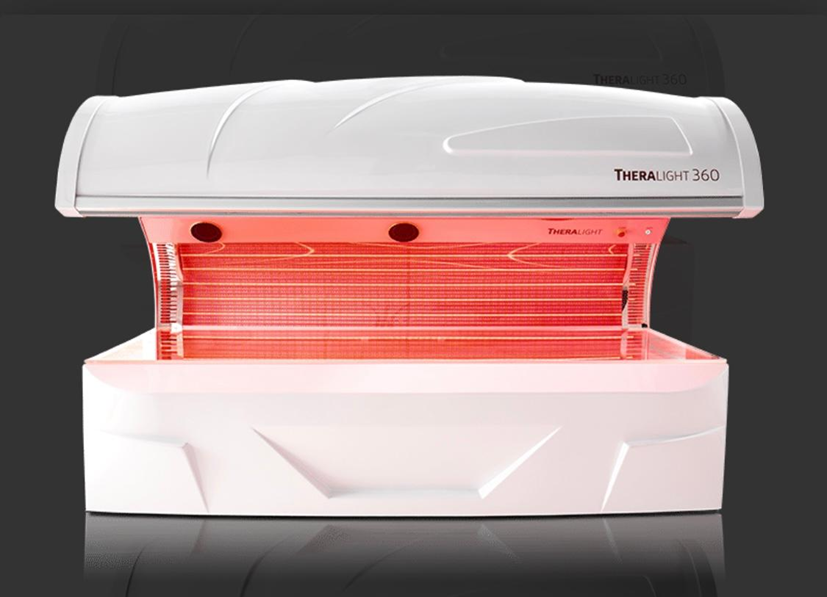
Red Light (600 TO 660 nanometers)
Much of the energy from red wavelength interacts with melanin (near the surface) and with the hemoglobin in the blood. There is also some reaction with mitochondria (secondary peak of the Cytochrome C Oxidase curve). This energy is absorbed close to the surface making it the superior option for superficial issues like scar tissue, burns, cosmetic issues, and other non-structural shallow issues. It can also be successfully used to treat neuropathy because the pain sensors associated with neuropathy are close to the surface.
Because some of the energy in this wavelength is transferred in the blood stream (but not hemoglobin), this wavelength can also be used to treat more complex problems where the exact treatment location might be unknown. In the blood, the light energy is converted into chemical energy and can flow through the body and interact with damaged cells all through the body. This wavelength is also best for treating the lymph system.
Near Infrared (800 to 860 nanometers)
The near infrared wavelength is in the range of 800 to 860 nanometers with the peak around 808 to 810 nanometers. This is one of the best wavelengths to get a combination of deeper penetration and cellular interaction. Photobiomodulation in this range is optimized to interact with the mitochondria and they activate an increase in Cytochrome C Oxidase and Adenosine Triphosphate, 2 essential chemicals that provide energy in the body. These wavelengths help restore damaged tissue and relieve pain.
905 nanometers
Lights that operate in this range must be pulsed (turned on and off) to keep the diodes from overheating. This wavelength is unique because it interacts mainly with the iron in hemoglobin. When a 905nm light interacts with the iron in hemoglobin, it oxygenates the area. Oxygen is another key chemical in the healing process so that some conditions might achieve the best results with a super-pulsed light.
980 nanometers
As we near 980nm, we are outside of the optical window and we are approaching the peak interaction of light with H2O in the body. As the wavelength increases, it approaches 100% absorption by water. Although some of the energy is also interacting with the tissue and performing the same function as a 800 to 850nm light, the bulk of the energy goes to creating thermal gradients in the H2O that increase circulation and blood flow. The increase in circulation may help with tissue relaxation. 980 nm is a secondary wavelength for people who also want maximum pain control, maximum circulation, and better muscle relaxation.
1064+ nanometers
Similar to 980nm, 1064 and up are more wavelengths that are less effective at driving energy deep into tissue and triggering a photochemical reaction, but they are better for pain control, inflammation control, and increasing blood flow.
400mn (UV) Light
Our photobiomodulation devices do not include light at the 400nm frequency. This light kills good and bad bacteria by destroying the DNA.
Multi-wavelength systems interact with many different kinds of cells to create a variety of positive changes in the body. We offer both single-wavelength and multi-wavelength systems at FreedomLight Therapy.

